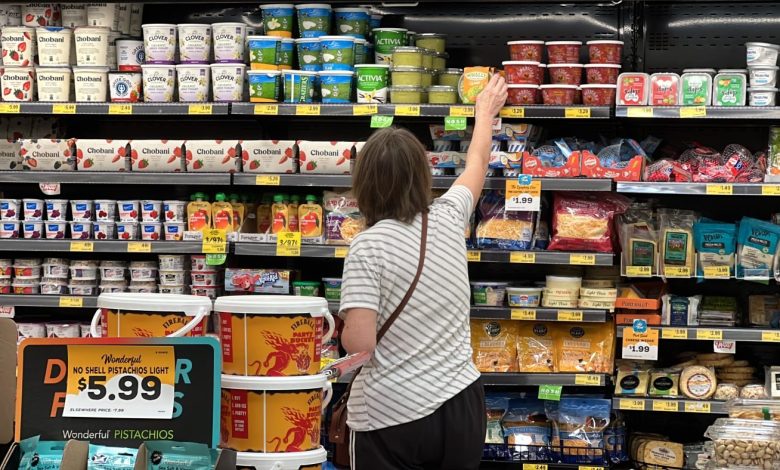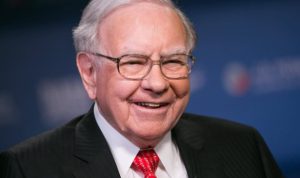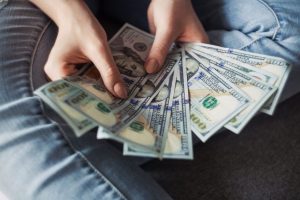The Labor Department announced on Wednesday that the consumer price index (CPI) decreased by one full percentage point from a yearly increase of 6% in February to a 5% increase in March. This decrease was due to lower costs for commodities ranging from autos to fresh fruit.
Since May 2021, that represents the lowest annual consumer inflation rate. Since last June, when they reached a 9.1 percent annual growth top, prices have been declining.
Profit crisis: As corporate profits decline from record highs, inflation eases.
The Federal Reserve has slowed economic activity and pushed the economy into recession in response to higher prices, but the significant advances in Wednesday’s prices report are likely to cause some disagreement among central bankers. Already, Fed leaders were torn over whether the bank should continue raising rates or pause after a historically rapid rate hike campaign.
Here are five takeaways from Wednesday’s encouraging price report.
The Labor Department announced on Wednesday that the consumer price index (CPI) decreased by one full percentage point from a yearly increase of 6% in February to a 5% increase in March. This decrease was due to lower costs for commodities ranging from autos to fresh fruit.
Since May 2021, that represents the lowest annual consumer inflation rate. Since last June, when they reached a 9.1 percent annual growth top, prices have been declining.
Profit crisis: As corporate profits decline from record highs, inflation eases.
Prices have fallen despite a hot job market
A recruitment sign is displayed at a restaurant in Prospect Heights, Illinois on Tuesday, April 4, 2023. On Friday, the US government releases the March jobs report. (AP Photo/Nam Y Huh)
Inflation has traditionally been associated with higher wages since labor costs are the largest component of prices. But wages have not kept pace with inflation in the current cycle, with the exception of the low paid, who have made more money relative to inflation.
Some economists had been expecting a huge rise in unemployment as inflation falls, and the Fed still expects more than a million people to be out of work this year, but so far that spike hasn’t materialized.
The economy added 236,000 jobs in March and the unemployment rate fell to 3.5 percent from 3.6 percent as the workforce grew, according to the latest jobs report from the Department of Labor.
Add another: Five takeaways from a strong job report from March
Meanwhile, inflation has fallen across multiple metrics, with the personal consumption expenditure (PCE) price index falling to 5 percent and the “core” CPI, which excludes energy and food prices, falling from a recent high of 6.6 percent It fell 5.6 percent last September.
Real wages rose 0.2 percent in March from February, the Labor Department reported.
After inflation in the late 1960s, the Nixon administration responded with wage and price freezes, but this policy was reversed in favor of rate hikes implemented by the Federal Reserve during the Carter and Reagan administrations. These increases dampened inflation, but only by plunging the economy into a devastating recession.
Eat a ham and egg sandwich: Food prices are falling
Partially empty shelves of eggs are seen at a grocery store in Orlando, Fla. on Tuesday, January 10, 2023 (AP Photo/John Raoux)
Food prices led to the overall decline in March CPI. Food prices rose 8.5 percent annually in March, compared with 10.2 percent in February and a peak of 13.5 percent last August. Food prices are still much higher than a year ago and well above headline inflation of 5 percent, but trending in the right direction.
Breaking news: Monthly drop in egg prices is the biggest in 36 years
Meat, fish and poultry prices fell 1.4 percent on the month, compared with a peak of more than 14 percent annual inflation last spring. The ham price fell by 4.8 percent from February to March.
Egg prices fell 10.9 percent off a cliff, while butter prices fell 6 percent.
Bread prices are down 0.3 percent for the month, and prices for fresh cookies, buns and muffins are down 0.7 percent.
Inflation could fall to almost 2 percent this year
Some analysts are very optimistic about inflation’s trajectory throughout the year, arguing that it could end up close to the Fed’s 2% annual target.
“This report leaves little doubt that the disinflation process is in full swing,” EY Chief Economist Gregory Daco wrote in an analysis.
“Slower final demand growth for goods and services, slowing housing price inflation and moderate wage growth should combine in the coming month to result in faster disinflation than consensus and Fed policymakers expect.”
Daco forecast that inflation will fall to 2.7 percent by the fourth quarter of this year, which is very close to the Fed’s 2 percent target, although some economists say that’s too low.
Wednesday’s slight increase in core CPI to 5.6 percent from 5.5 percent might make a forecast less likely, but Daco said he still sees core falling to an annual rate of 3.3 percent year-on-year.
Fed officials split on rate hikes
Federal Reserve Chairman Jerome Powell addresses his semi-annual monetary policy report to Congress before the Senate Committee on Banking, Housing and Urban Affairs on Tuesday, March 7, 2023. (The Hill)
US Federal Reserve officials are divided on whether to keep interest rate hikes going.
New York Fed President John Williams said in an interview with Yahoo Finance on Tuesday that “inflation is still very high” and that the Fed still needs to do more to cut rates.
“Job growth is actually still pretty strong,” he said. “We are seeing some slowdown in labor demand. But the demand for labor is still very strong.”
But Chicago Fed President Austin Goolsbee suggested it was time for the Fed to take a break.
“I think that in moments of financial stress like this, the right monetary policy is really caution, vigilance and prudence,” Goolsbee said Tuesday.
The CME FedWatch forecasting algorithm put the probability of a 0.25 percentage point rate hike on Wednesday at 66 percent and the probability of no rate hike at 34 percent.
Earnings are cooling along with inflation, but companies are still “creeping” surpluses
Businesses have often acknowledged their increased pricing power during this inflationary cycle, as well as consumers’ willingness to accept higher prices.
Walmart to close 4 stores in Chicago IMF: Risk of a hard landing for the US economy remains
While both earnings and inflation are now easing, the initial demand-driven inflation that occurred as a result of supply shocks has now fully reversed, while profit-margin-driven inflation persists after a commodity shock.
“Demand-driven temporary inflation in 2021 is now deflation – TV prices are more than 21% below their post-pandemic peak. The second wave of inflation – an energy supply shock – is now disinflationary,” UBS economist Paul Donovan wrote in a note to investors on Wednesday morning.
“Profit-margin-driven inflation is here to stay. As companies creep in profits alongside cost increases, margin-driven inflation should be stronger early in the year, when cost increases are most often passed on.”





